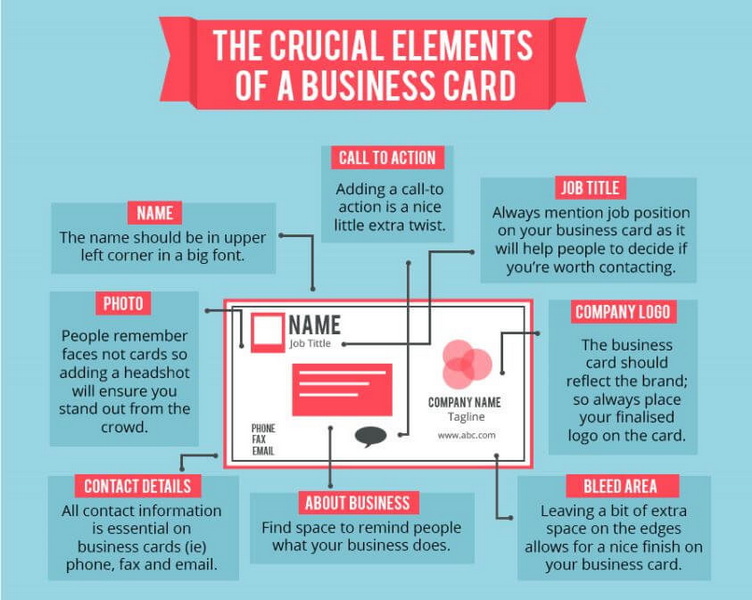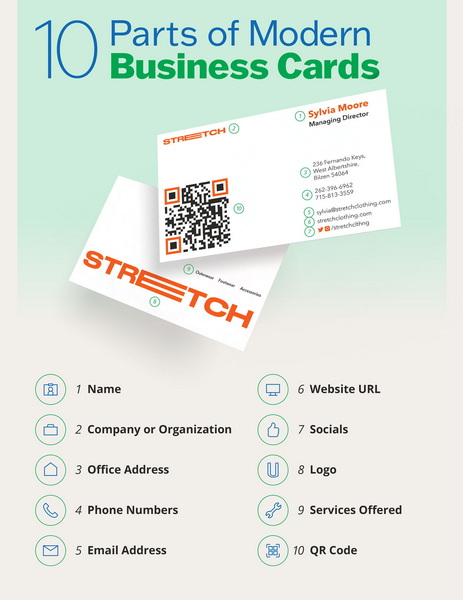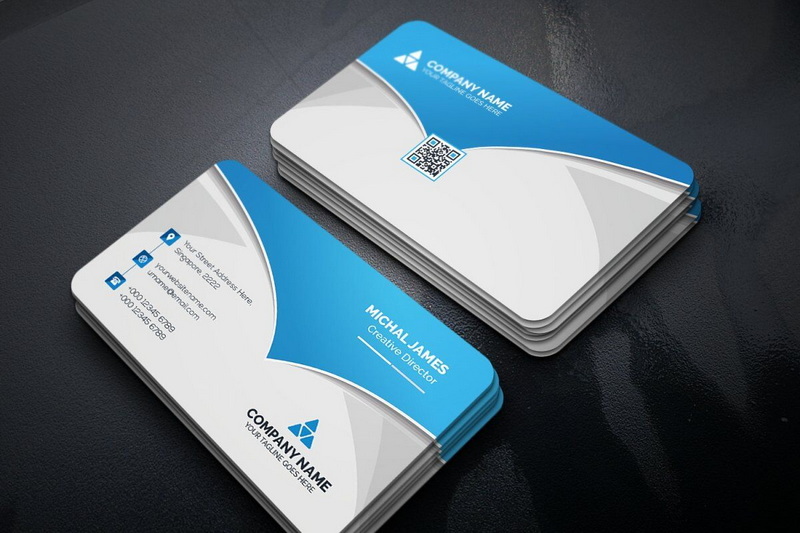Content Menu
● Essential Information
● Visual Elements
● Design Considerations
● Optional Elements
● Best Practices
● Tailoring Your Business Card
● Networking Strategies with Business Cards
● Conclusion
● Frequently Asked Questions
>> 1. What is the purpose of a business card?
>> 2. Should I include my photo on my business card?
>> 3. How many contact methods should I include?
>> 4. Is it necessary to have a logo on my business card?
>> 5. What size should my business card be?
● Citations:
Creating a business card that effectively communicates your professional identity and brand is crucial in today's networking landscape. A well-designed business card serves as a tangible representation of your brand, making a lasting impression on potential clients, partners, and contacts. This article will explore the essential elements to include on a business card, design considerations, best practices to ensure your card stands out, and additional tips for maximizing its effectiveness.

Essential Information
The primary purpose of a business card is to provide essential contact information. Here are the key elements you should always include:
- Your Name: This should be the most prominent text on the card. Use your full name to ensure clarity.
- Job Title: Including your job title helps recipients understand your role within the organization or as an independent professional.
- Company Name: If you are affiliated with a company, include its name prominently to enhance brand recognition.
- Contact Information: This typically includes:
- Phone number (mobile or office)
- Email address
- Website URL
- Physical address (if necessary)
- Social Media Links: If relevant, include links to professional social media profiles like LinkedIn. However, limit this to platforms that reflect your professional persona.
Including these essential elements ensures that anyone receiving your business card can easily reach out to you or learn more about your services.
Visual Elements
A business card is not just about text; visual elements play a crucial role in making it memorable. Consider the following:
- Logo: Your company logo should be included to reinforce brand identity. Ensure it is high-resolution and appropriately sized.
- Tagline or Slogan: A brief tagline can succinctly convey what you or your company does, enhancing recall.
- Color Scheme: Choose colors that reflect your brand identity. Consistency with your brand colors across all marketing materials is essential for recognition.
- Images or Graphics: Depending on your profession, including relevant images (like product photos for salespeople or creative designs for artists) can make your card more engaging.
Visual elements should complement the text rather than overwhelm it. Striking the right balance can create an aesthetically pleasing and effective business card.
Design Considerations
The design of your business card can significantly affect how it is perceived. Keep these tips in mind:
- White Space: Utilize white space effectively to avoid clutter. A clean design enhances readability and makes key information stand out.
- Font Choice: Select fonts that are easy to read and reflect your brand's personality. Avoid overly decorative fonts that may hinder legibility.
- Card Size and Shape: The standard size for business cards is 3.5 x 2 inches, but unique shapes or sizes can help you stand out—just ensure they remain practical for storage in wallets or holders.
- Double-Sided Printing: Consider using both sides of the card for additional information or visuals without overcrowding the front.
Designing a business card is an art form in itself; it requires careful consideration of how each element interacts with one another while maintaining clarity and professionalism.
Optional Elements
While not mandatory, including additional elements can enhance your business card's effectiveness:
- QR Codes: Adding a QR code can link to your website, portfolio, or social media profiles, providing instant access to more information.
- Call to Action: Encourage recipients to take action, such as visiting your website or contacting you directly. Phrases like “Let's Connect” or “Visit My Portfolio” can prompt engagement.
- Personal Photo: For freelancers and creatives, including a professional photo can help establish a personal connection and make your card more memorable.
These optional elements add depth and interactivity to your business card while reinforcing your brand message.

Best Practices
To maximize the impact of your business card:
- Keep It Simple: Avoid cluttering the card with excessive information or graphics. Focus on key details that facilitate easy contact.
- Quality Materials: Invest in high-quality paper stock and printing techniques to convey professionalism and attention to detail. The tactile experience of a well-made card can leave a lasting impression.
- Proofread: Ensure all information is accurate and free from typos before printing. Mistakes can undermine credibility and professionalism.
- Test Designs: Consider getting feedback on different designs from colleagues or friends before finalizing your card. Fresh perspectives can help identify areas for improvement that you might have overlooked.
Tailoring Your Business Card
Different professions may require different approaches when designing a business card:
- Creative Professionals: If you're in a creative field such as graphic design, photography, or art, use vibrant colors and unique layouts that showcase your creativity while still maintaining professionalism.
- Corporate Professionals: For those in more traditional fields such as finance or law, opt for conservative colors and classic designs that convey trustworthiness and reliability.
- Entrepreneurs and Freelancers: Your business card should reflect both your personal brand and the services you offer. Be sure to highlight any specialties or unique selling propositions clearly.
Tailoring the design of your business card according to industry standards while infusing personal touches can help you connect better with potential clients or partners.
Networking Strategies with Business Cards
Once you've created an effective business card, it's essential to use it strategically during networking events:
- Be Prepared: Always carry several cards with you wherever you go—networking opportunities can arise unexpectedly.
- Engage Meaningfully: When handing out your card, engage in conversation first. This makes the exchange feel more personal rather than transactional.
- Follow Up: After meeting someone new, send them a follow-up email referencing your conversation and including another copy of your digital business card if appropriate.
Networking is not just about exchanging cards; it's about building relationships that may lead to future collaborations or opportunities.
Conclusion
A well-crafted business card is an invaluable tool in professional networking. By including essential information, visual elements, adhering to design best practices, tailoring it for specific industries, and employing effective networking strategies, you can create a memorable representation of yourself and your brand. Remember that simplicity often leads to clarity; prioritize key details while ensuring that your design reflects your professional identity effectively.

Frequently Asked Questions
1. What is the purpose of a business card?
A business card serves as a professional introduction, providing key contact information and representing your brand visually during networking events or meetings.
2. Should I include my photo on my business card?
Including a photo can be beneficial for freelancers or creatives as it adds a personal touch and helps recipients remember you better.
3. How many contact methods should I include?
At minimum, include one phone number and one email address; however, adding multiple methods (like social media links) can enhance accessibility without overcrowding the design.
4. Is it necessary to have a logo on my business card?
While not mandatory, having a logo strengthens brand recognition and creates a cohesive look across marketing materials.
5. What size should my business card be?
The standard size is 3.5 x 2 inches; however, unique sizes can help differentiate your card from others if they remain practical for storage.
Citations:
[1] https://www.indeed.com/career-advice/career-development/what-to-put-on-a-business-card
[2] https://shawngraham.me/blog/what-should-be-on-a-business-card-for-small-businesses
[3] https://www.gelato.com/blog/how-to-design-a-business-card-2024-guide
[4] https://www.reddit.com/r/UBC/comments/18fn9pb/how_long_does_it_take_you_guys_to_write_a_2500/
[5] https://blog.hubspot.com/marketing/the-ins-and-outs-of-writing-long-form-content
[6] https://www.writerscollegeblog.com/the-20-most-important-pointers-to-write-better-articles/
[7] https://www.gatewaydigitalpress.com/what-we-print/business-cards/business-card-faqs.html
[8] https://tapmo.in/blogs/news/faqs-about-business-cards-everything-you-need-to-know
[9] https://www.vistaprint.com/hub/how-to-design-business-card
[10] https://www.colorfxweb.com/blog/the-11-parts-of-a-business-card/
[11] https://www.banana-print.co.uk/blog/business-card-info/
[12] https://capitalizemytitle.com/writing-time/2400-words/
[13] http://www.graphicdisorder.com/business-card-faq
[14] https://www.bannerbuzz.com/blog/8-key-questions-to-ask-before-buying-business-cards/
[15] https://www.primoprint.com/blog/10-crucial-parts-to-a-business-card-design/
[16] https://www.brandly.com/blog/what-to-put-on-a-business-card/
[17] https://www.4over4.com/content-hub/stories/top-10-tips-on-what-to-include-on-a-business-card
[18] https://www.swagify.com/blog/how-to-design-a-business-card/
[19] https://www.staples.com/sbd/cre/noheader/business-card-guide/designing-your-card/what-to-include
[20] https://www.reddit.com/r/smallbusiness/comments/p2xov6/what_do_i_write_on_my_business_card/
[21] https://www.starcastlestudio.com/blog/business-card-design-basics
[22] https://www.vistaprint.com/hub/business-card-information-essentials
[23] https://kylegoldie.com/what-to-include-and-not-include-on-your-business-cards/
[24] https://en.99designs.de/designer-resource-center/designing-business-cards
[25] https://www.vistaprint.com/hub/business-card-design-rules
[26] https://www.tactive.cc/business-card-essentials/
[27] https://sciencepod.net/how-to-write-a-good-article/
[28] https://www.snapagency.com/700-1800-2500-words-look-like/
[29] https://ucm.calpoly.edu/guidelines-newswriting
[30] https://pro-writer.com/write-article/
[31] https://libguides.derby.ac.uk/c.php?g=691079&p=4950560
[32] https://www.linkedin.com/pulse/how-write-article-six-step-guide-saahil-nair
[33] https://www.reddit.com/r/freelanceWriters/comments/rtiww7/what_are_some_tips_to_write_articles_faster_and/
[34] https://writing.stackexchange.com/questions/2300/how-many-words-hour-should-you-aim-for-when-writing-your-first-draft
[35] https://www.writingclasses.com/toolbox/articles/15-tips-for-writing-articles
[36] https://iimskills.com/10-practices-and-tips-for-good-article-writing/
[37] https://www.youtube.com/watch?v=TRwI0AxJo14
[38] https://indieessentials.co.uk/how-to-write-a-long-article-or-blog/
[39] https://ivypanda.com/essays/words/2400-words-essay-examples/
[40] https://www.jasper.ai/blog/long-form-content
[41] https://studycorgi.com/words/2400-words-free-essay-samples/
[42] https://www.greenerprinter.com/support/business-cards-faqs/
[43] https://smartpress.com/support/product-faq/business-card-printing-faq
[44] https://www.namecheap.com/visual/card-maker/faqs/
[45] https://www.absolutecp.co.uk/the-letterpress/important-questions-about-business-cards
[46] https://www.canr.msu.edu/od/communications_marketing/business-card-faqs
[47] https://www.printplace.com/articles/business-card-design-faq
[48] https://orchid.ganoksin.com/t/several-questions-about-business-cards/55622
[49] https://www.brandly.com/blog/questions-business-card-vendor/
[50] https://graphicdesign.stackexchange.com/questions/830/making-a-business-card-any-advice
[51] https://blog.marketmuse.com/an-idiot-proof-guide-to-long-form-content/
































